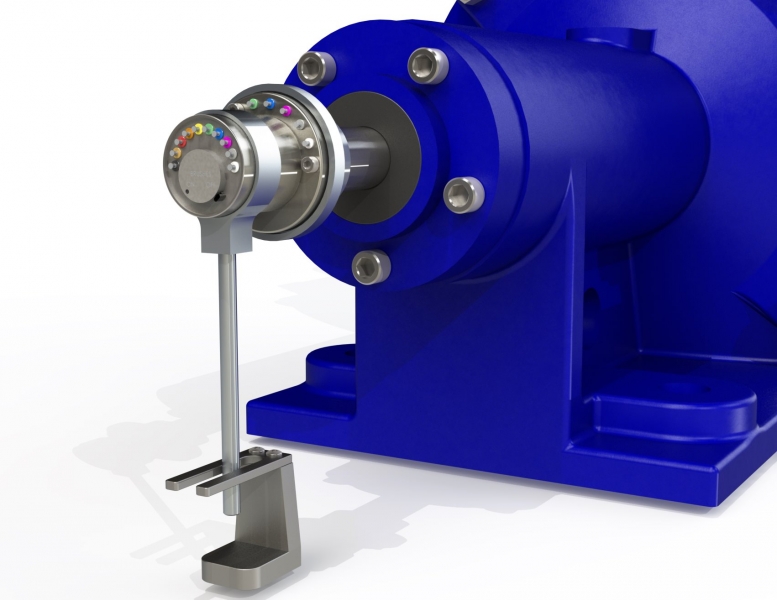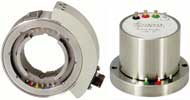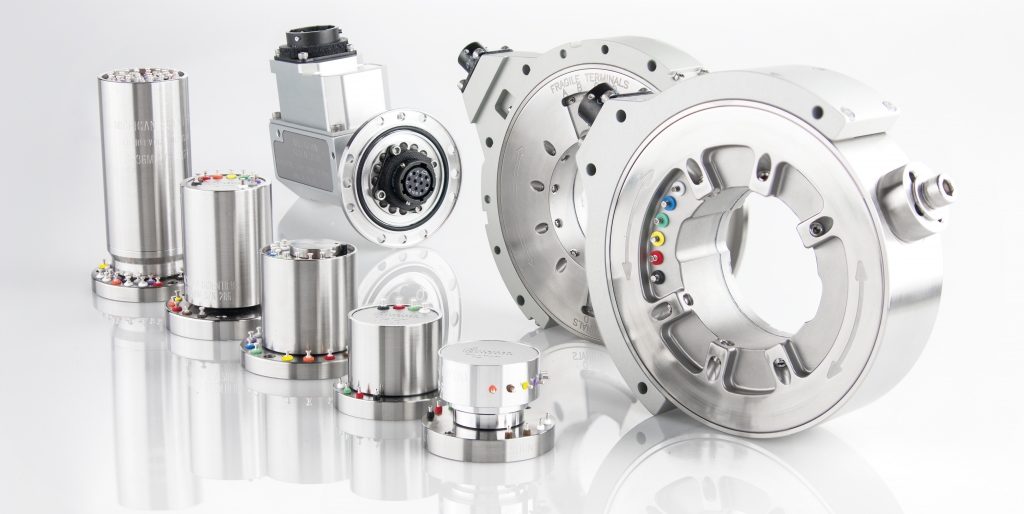In 1960, Michigan Scientific Corporation (MSC) opened its doors and began selling Instrumentation Slip Ring Assemblies. From there the company continued to push the limits of what their product could do, even going as far as making a 240-channel assembly used to test centrifugal compressors at NASA. We at Michigan Scientific are certainly excited about slip rings, but many people do not even know what slip rings are. So here are the basics:
Applications

An SR10 end-of-shaft slip ring can be mounted on a shaft of a gearbox.
Slip ring assemblies have been used in automotive, aerospace, robotic, agricultural, energy, and medical industries. They are an easy way of getting sensor signals from a rotating part. They are commonly used to test temperature, automotive drive shaft strain, torque, stress, vibration, and acceleration measurements. The rotor of a slip ring assembly rotates directly with the rotating portion of the application. This makes it an ideal platform for the installation of sensors on a rotating shaft. The sensor signal is transmitted through a ring-and-brush interface, so it can be easily passed from the stator of the ring to data acquisition.
End-of-shaft and Tubular Varieties

A variety of slip ring types are available for different applications.
Slip ring assemblies come in two varieties: end-of-shaft and tubular. The shape of the two slip rings differs substantially because the end-of-shaft slip rings are designed to mount to the end of a rotating shaft, while the tubular variety mounts directly on the rotating shaft. This makes end-of-shaft assemblies great for applications where parts such as wheels, gearboxes, engines, and compressors are tested. The tubular slip rings are generally used for automotive drive shaft measurement applications. The standard end-of-shaft assemblies are available with up to 60 connections, while the tubular generally have up to eight connections. However, custom slip ring assemblies can be designed to fit any application.
Common Sensors
A variety of sensors can connect to slip ring assemblies, the most common of which are thermocouples and strain gauges. Thermocouples can be attached to spinning parts, such as brake rotors or wheels, and routed to a slip ring that is mounted to the outside of the vehicle wheel. Mounting the thermocouple this way makes the temperature measurements easily accessible. When using thermocouples, the assembly should be kept at a uniform temperature because overheating could lead to inaccurate data. Strain gauges are generally configured as a Wheatstone bridge, which are not very sensitive to the slip ring’s small resistance changes. Amplifiers are available for both thermocouple and strain gauge sensors. The use of an amplifier can provide precise measurements under difficult conditions such as electrically noisy environments, low strain levels, high speeds, or vibration.
MSC’s Instrumentation Slip Ring Assemblies are rugged and compact. They are made of precious metals which minimize noise and enable the assemblies to be used for low-level instrumentation signals. Weatherproof designs are available that provide accurate test results in even the most adverse conditions. The company’s slip rings set the industry standard in durability and efficiency of design, making them a great choice for anyone’s first slip ring purchase.
To learn more about slip rings, contact a Michigan Scientific engineer today.
